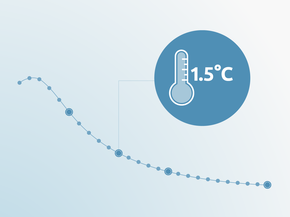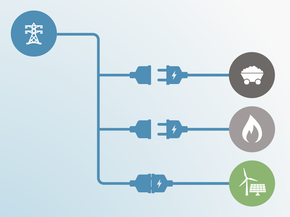Country summary
Overview
Since 2015, when President Mauricio Macri was sworn into office, Argentina has shown significant positive developments in the climate arena by adopting policies such as the ‘Biofuels Law’ and the ‘Renewable Energy Law’. The government announced a carbon tax on all fossil fuels in December 2017. The renewables support scheme RenovAr recently started the fourth auctioning round for renewables, focusing on small-scale installations.
The ministry of energy released a new set of energy scenarios, which project significantly lower emissions—if additional measures were implemented—compared to CAT’s current policy projections. With the lower end of the scenarios, Argentina could even overachieve its unconditional climate target (NDC) submitted under the Paris Agreement.
In recent months, a push by parts of the government towards the exploitation of domestic fossil resources has threatened progress in climate action (See our analysis of current policies): Some sections of the government are strongly promoting exploiting national oil and gas reserves for domestic consumption and export, and seem to prioritise this over expanding renewable electricity installations and improvements in electricity grids.
Argentina is one of the few countries that has strengthened the targets in its NDC since the adoption of the Paris Agreement. Nevertheless, CAT still rates Argentina’s NDC “Highly Insufficient”, indicating that the climate commitment is not consistent with holding warming to below 2°C, let alone limiting it to 1.5°C as required under the Paris Agreement, and is instead consistent with warming between 3°C and 4°C: if all countries were to follow Argentina’s approach, warming could reach over 3°C and up to 4°C. If Argentina were to increase its ambition by making its conditional target unconditional, we would rate it “Insufficient.”
Argentina’s revised Nationally Determined Contribution (NDC) includes an unconditional absolute emissions reduction target limiting emissions to 483 MtCO2e/a by 2030, including land use, land use change and forestry (LULUCF) emissions (422 MtCO2e excl. LULUCF). This is equivalent to a 35% increase compared to 2010 levels or 80% above 1990 levels, excluding LULUCF. Argentina has also put forward a conditional target to limit emissions to 369 MtCO2e/a by 2030 including LULUCF (322 MtCO2e excl. LULUCF), which equals an increase of 3% compared to 2010 levels or an increase of 38% compared to 1990, levels excluding LULUCF).
Argentina’s economic crisis has led to changes in the structure of ministries with the objective to decrease government spending. Included in these changes are departments dealing with climate change. It is unclear whether the structural change will have an impact on climate policy.
Whether Argentina will achieve its unconditional NDC depends mostly on the development of the energy sector. Uncertain variables are the speed of renewable energy expansion, additional nuclear plants, and demand projections. Under the most optimistic scenario, if Argentina were to implement additional policies to scale-up low carbon energy sources and reduce energy demand, it could even significantly overachieve its unconditional NDC target. (See Current Policy Projections section for full details).
The scenarios from the Ministry of Energy and Mining suggest an increase of renewable energy capacity of 14–18 GW by 2030, compared to only 4.8 GW that have been contracted under the renewable auctioning scheme RenovAr. The scenarios also assume further additions of nuclear capacity of almost 2 GW by 2030, although the scenarios show that investment costs for nuclear are about seven times higher than the costs of renewables and gas in Argentina. Also, solar PV is projected to be cost competitive with gas turbines before 2030.
Under more conservative assumptions, which only consider renewable and nuclear capacity additions currently underway, Argentina will miss its targets, unless it revises the energy split or implements actions in other sectors. Our policy projections, as well as the new scenarios from the Ministry of Energy and Mining, do not yet reflect the recently implemented carbon tax, and no studies yet exist that quantify the impact.
Further analysis
Latest publications
Stay informed
Subscribe to our newsletter






